
Barrhead to Glasgow Electrification
Barrhead to Glasgow Electrification
Electrification of the Glasgow-Barrhead line introduces a substantial change to the railway environment, as the new overhead power cables carry a deadly 25,000 volts of electricity and are always on, so always stay off!
Scotland's Railway - Greener in the Making
PROJECT ACTIVITIES
The Glasgow - Barrhead electrification project is part of a Scottish Government investment to decarbonise passenger services across Scotland's Railway by providing greener trains onto the route.
Electrification introduces a substantial change to the railway environment in terms of risk for those living or working near to the newly electrified route.
The new overhead power cables carry 25,000 volts of electricity and are always on, so always stay off. Trespassing onto the railway and getting too close to the overhead line equipment is extremely dangerous and can be fatal.
Over autumn, we are carrying out finishing works, followed by signalling commissioning and then running test trains on the route, ahead of the introduction of electric trains from December 2023.
Ahead of this, we completed a six-week programme of intensive engineering works over the summer to prepare the line for electrification.
This critical phase of the project allowed us to work 24/7, with over 70,000 hours worked. Activity included installing 14,400 metres of overhead power cables and renewing 130 metres of track.
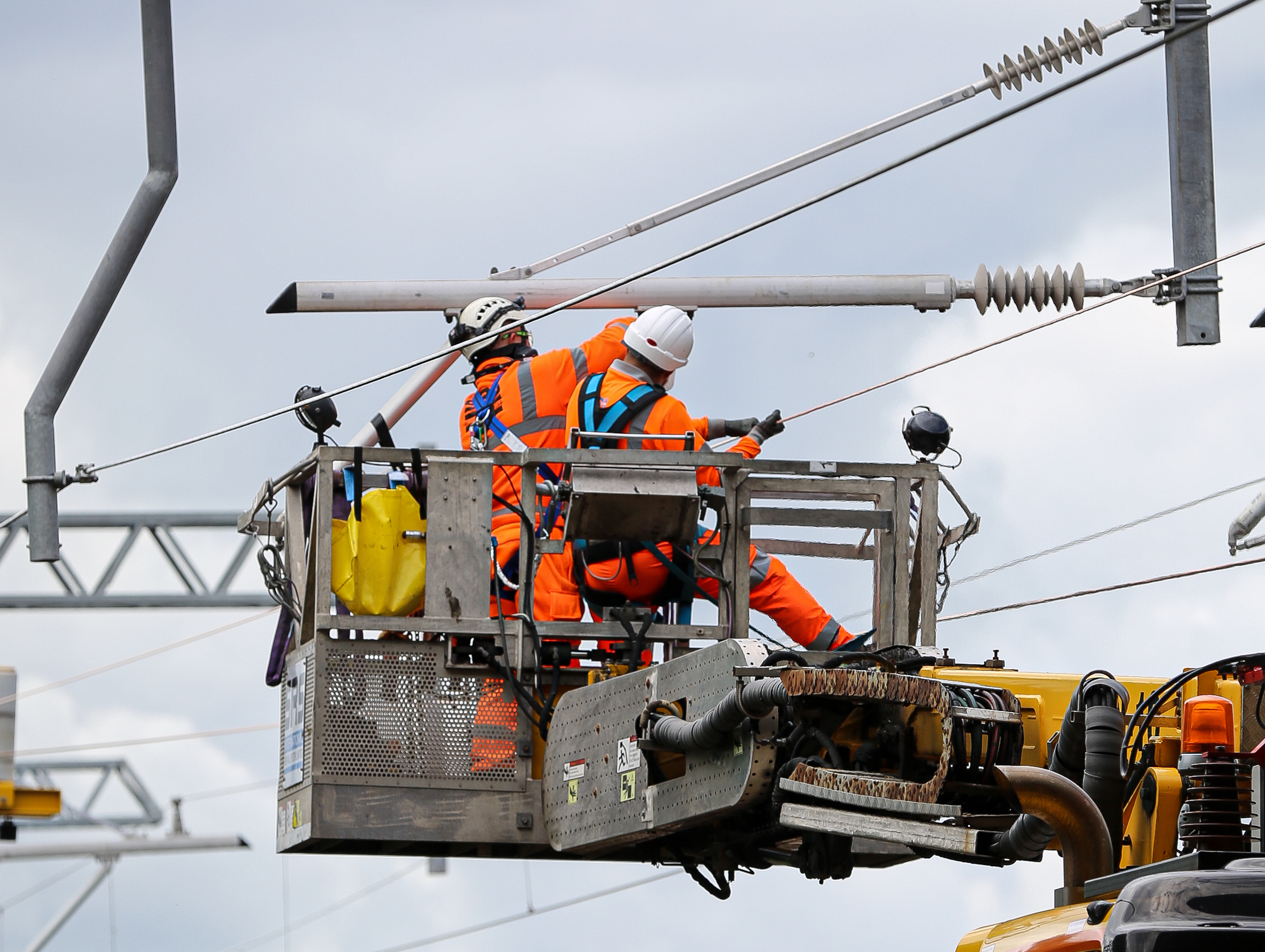
We also delivered works at four key stations – Kennishead, Priesthill & Darnley, Nitshill and Barrhead.
Bridge parapets were raised in height at Kennishead and Priesthill & Darnley stations to make them safe and compliant for an electrified railway.
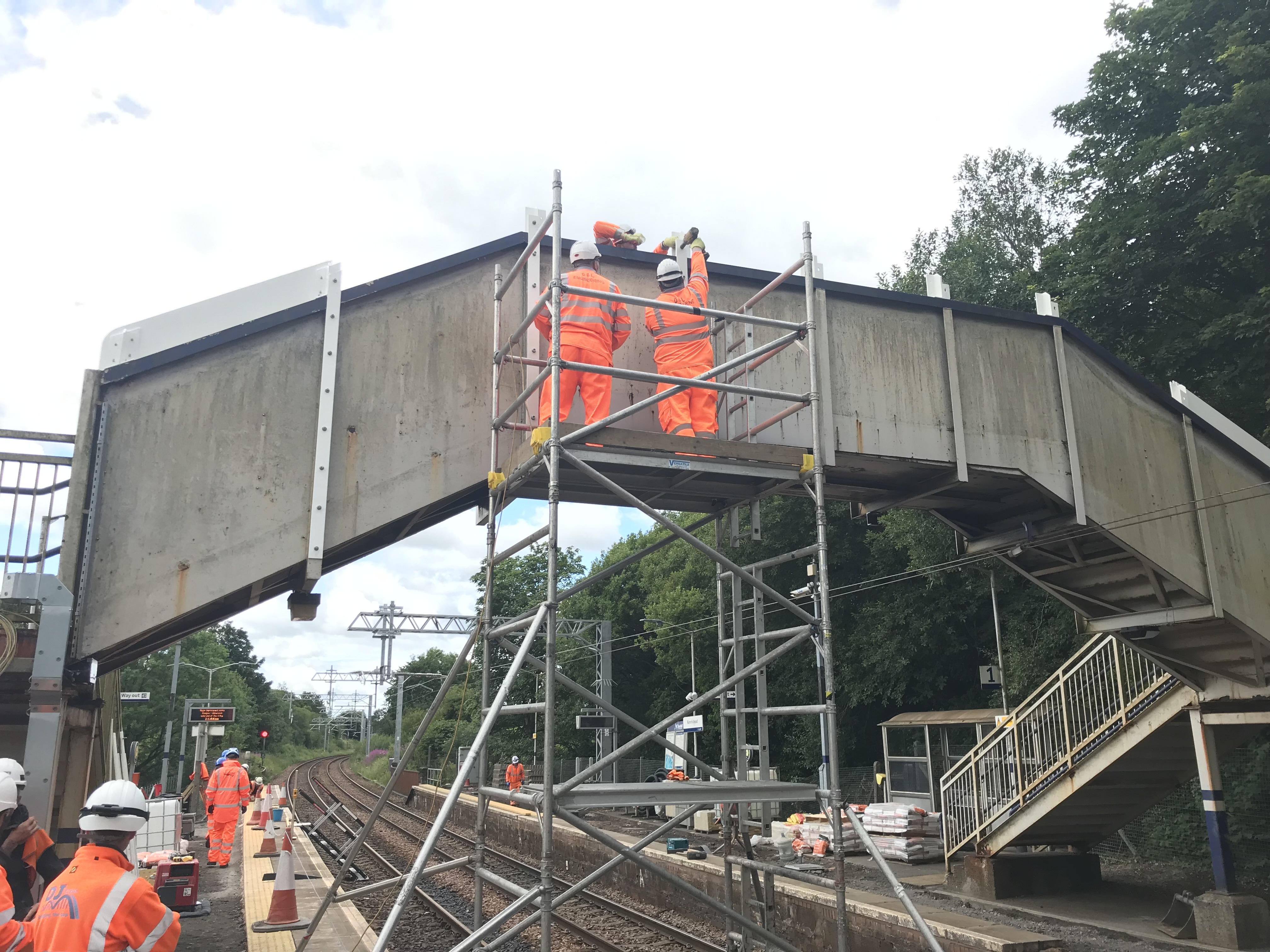
A significant amount of work took place at Barrhead station, with Platform 3 extended to accommodate longer four-carriage electric trains. This involved moving the current buffers and rebuilding the access paths.
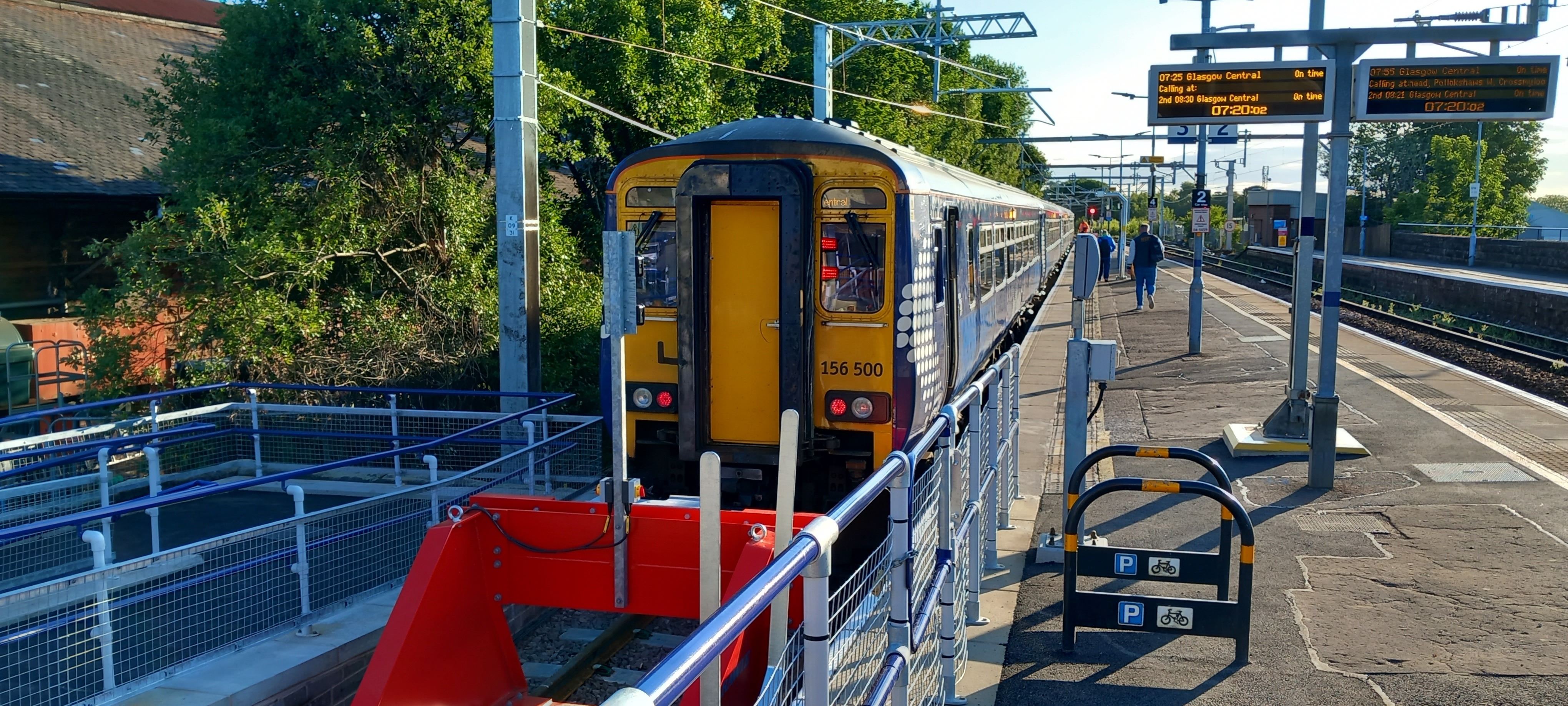
The old lattice footbridge at Nitshill station, too low to fit the overhead cables underneath, was replaced with a new ramp.
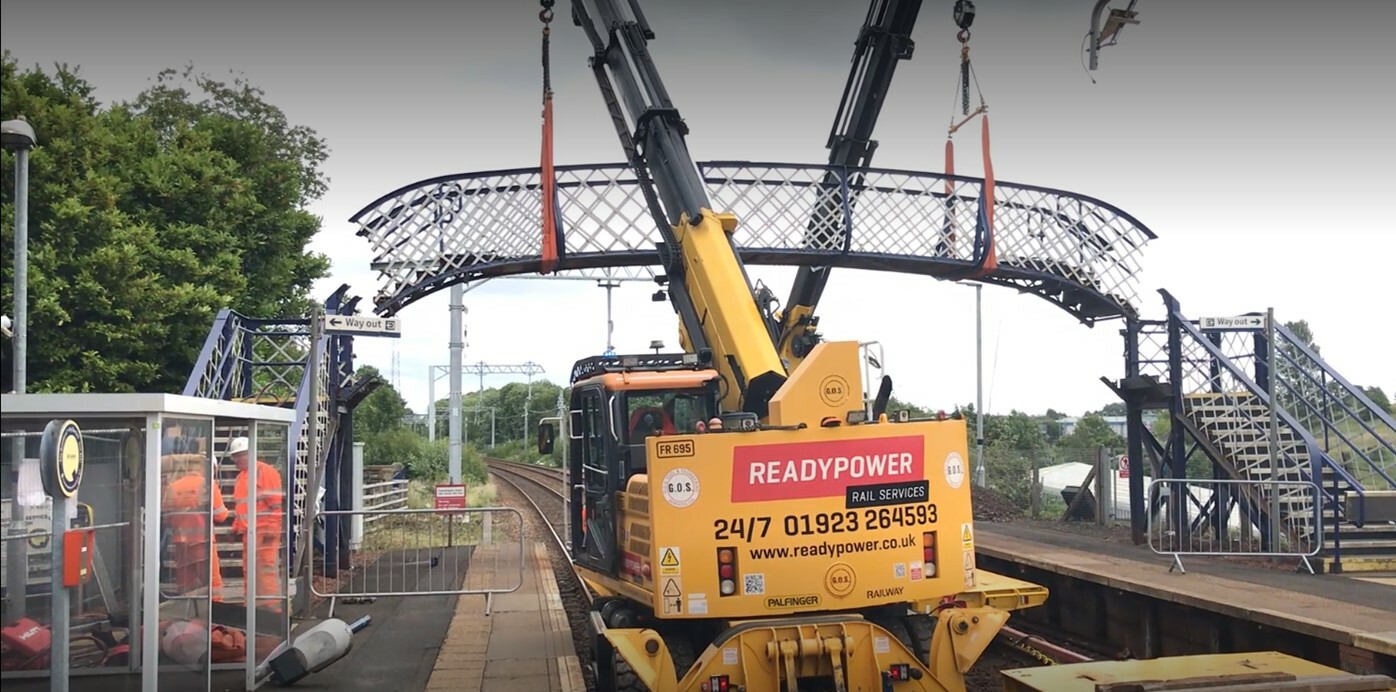
The ramp provides access to Platform 2 for services to Barrhead and Kilmarnock and is accessed through a reopened underpass off Nitshill Road.
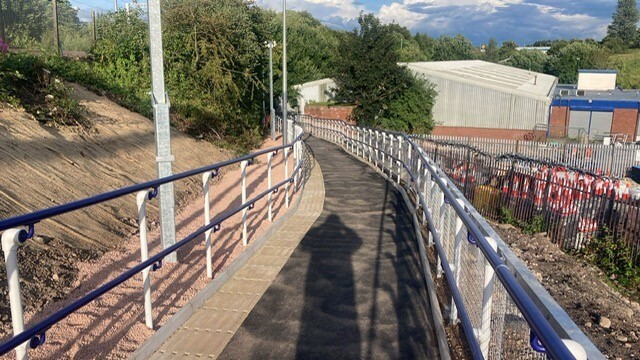
During the works, our signalling engineers took advantage of the line closure between Barrhead and Kilmarnock to carry out refurbishment of the signalling system near Lugton in East Ayrshire.
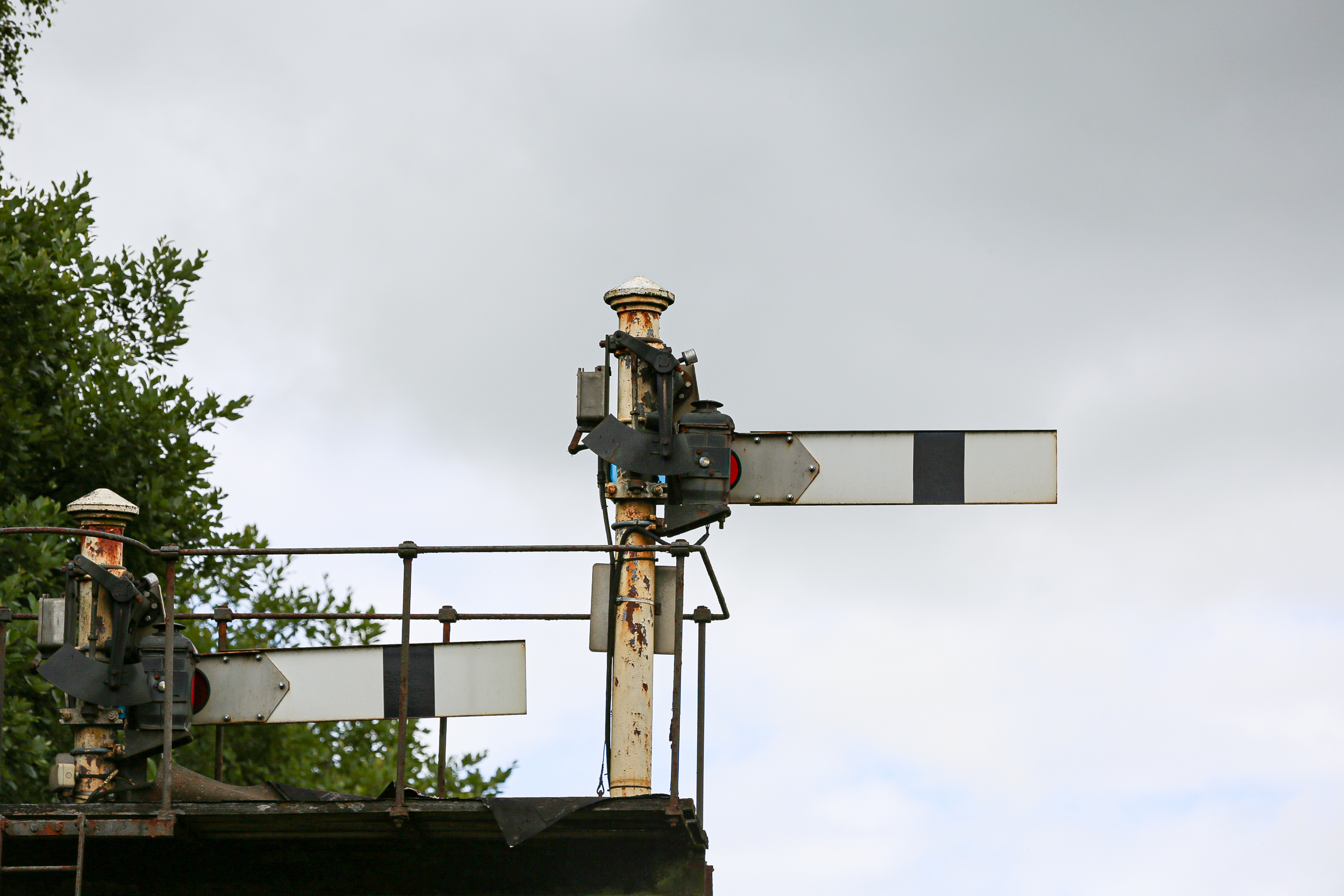
This project forms part of a rolling programme of decarbonisation and follows on from the electrification of the main Edinburgh - Glasgow line, the Stirling-Dunblane-Alloa route and the Shotts line, with 325 single track kilometres of electrified railway delivered across Scotland over the last decade.
Project Timeline
-
May 2022 to February 2023 - Route wide piling work to accommodate overhead line stanchions
-
June 2022 - Removal of Carstcraig Road footbridge
-
August 2022 - Removal of bridge deck at Nithsdale Road to allow higher clearance bridge deck to be built, with the road reopening in January 2023
-
June to August 2023 - Six week period of major engineering works between Kennishead and Barrhead stations to prepare the line for electrification.
-
December 2023 - Project Completion
Why?
Large numbers of passenger and freight journeys are already made on electrified routes in Scotland. By converting the remainder of the diesel-powered railway network to being powered by electricity and low carbon sources, this will result in fewer greenhouse gas emissions, generating an even greener railway.
What will change?
As part of the Scottish Government's action plan to decarbonise the railway, the Barrhead to Glasgow electrification project represents the current phase of the wider decarbonisation programme, as one of two priority lines for electrification, with the other being East Kilbride. The existing railway between Barrhead and Busby Junction consists of 12 km of non-electrified railway.
